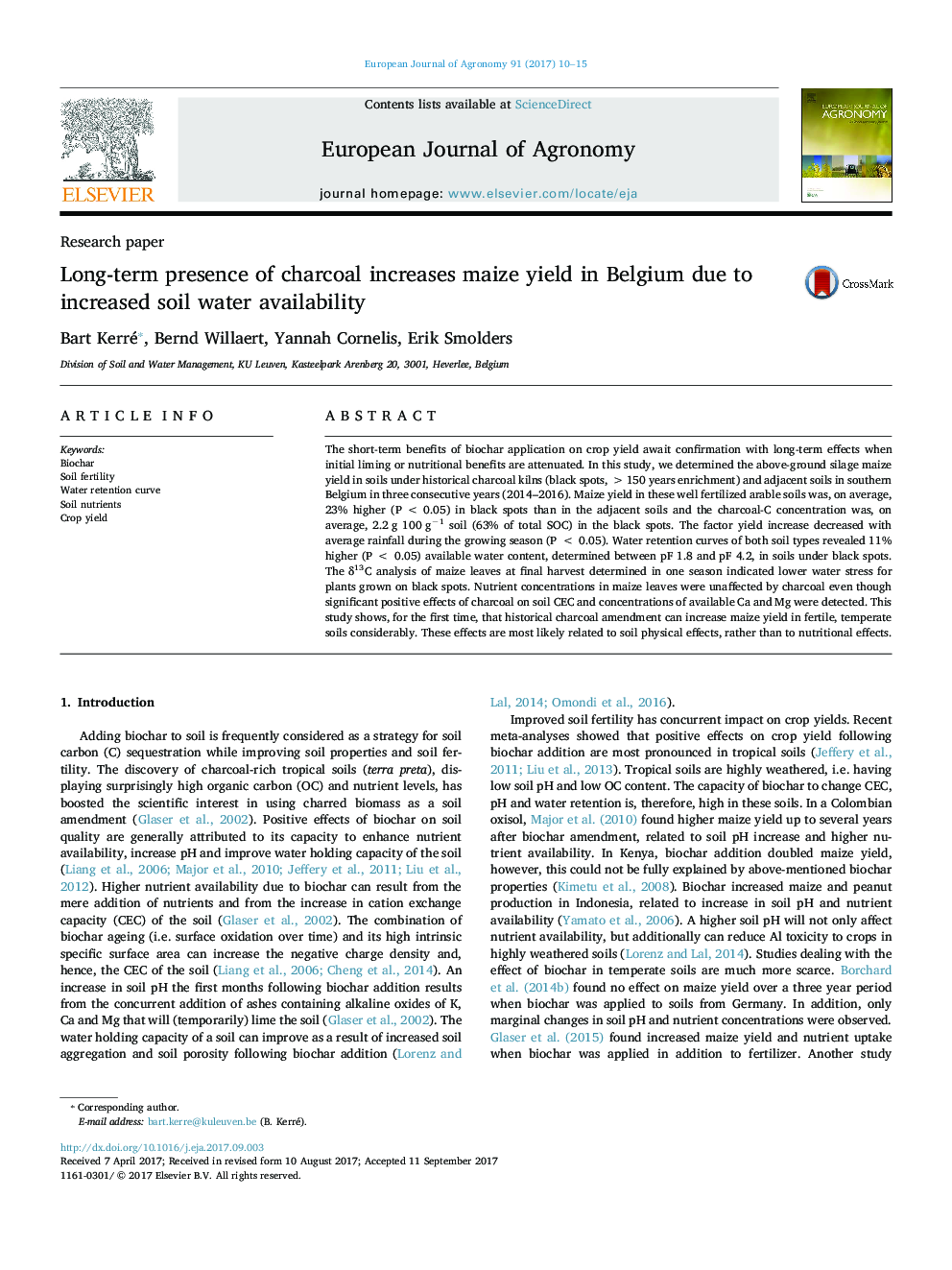| Article ID | Journal | Published Year | Pages | File Type |
|---|---|---|---|---|
| 5761277 | European Journal of Agronomy | 2017 | 6 Pages |
Abstract
The short-term benefits of biochar application on crop yield await confirmation with long-term effects when initial liming or nutritional benefits are attenuated. In this study, we determined the above-ground silage maize yield in soils under historical charcoal kilns (black spots,â>150 years enrichment) and adjacent soils in southern Belgium in three consecutive years (2014-2016). Maize yield in these well fertilized arable soils was, on average, 23% higher (P < 0.05) in black spots than in the adjacent soils and the charcoal-C concentration was, on average, 2.2 g 100 gâ1 soil (63% of total SOC) in the black spots. The factor yield increase decreased with average rainfall during the growing season (P < 0.05). Water retention curves of both soil types revealed 11% higher (P < 0.05) available water content, determined between pF 1.8 and pF 4.2, in soils under black spots. The δ13C analysis of maize leaves at final harvest determined in one season indicated lower water stress for plants grown on black spots. Nutrient concentrations in maize leaves were unaffected by charcoal even though significant positive effects of charcoal on soil CEC and concentrations of available Ca and Mg were detected. This study shows, for the first time, that historical charcoal amendment can increase maize yield in fertile, temperate soils considerably. These effects are most likely related to soil physical effects, rather than to nutritional effects.
Related Topics
Life Sciences
Agricultural and Biological Sciences
Agronomy and Crop Science
Authors
Bart Kerré, Bernd Willaert, Yannah Cornelis, Erik Smolders,
